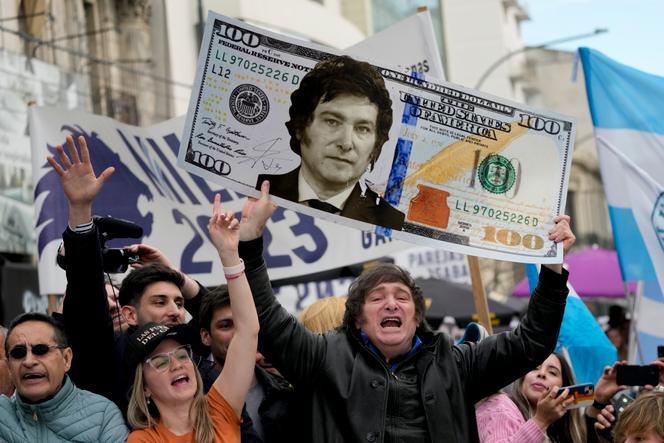


The reusable supermarket bag was nonchalantly slung over her shoulder. It seemed empty, and Olga, 72, looked like one of those pedestrians about to fill up on weekend shopping in a middle-class neighborhood of Buenos Aires. Inside the deep plastic bag, however, lay $3,000, held together by an elastic band. "I've just exchanged pesos for dollars. I'm saving up for a trip," said the retired civil servant.
The sum came from a gambling jackpot. Hoarding the loot in the national currency was unthinkable, as Olga, like all Argentines, felt the pesos burning a hole in her pocket. As soon as you get them, you either have to spend the cash or convert them into dollars. The emergency has a name, that of Argentina's chronic illness: inflation. In August, the country recorded a 32-year monthly record, at 12.4%. Prices have soared by 124.4% over one year. What's the point of saving pesos today if their value plunges tomorrow?
"Saving in dollars is widespread in Argentina. It's an everyday currency, not just the privilege of experts. The basic question is still: What is the real value of the peso?" said Ariel Wilkis, a sociologist at San Martin University and co-author of the book The Dollar: How the US Dollar Became a Popular Currency in Argentina, which will soon be released in English. With the lack of confidence in the peso, the dollar is used not only as a savings currency but also as a reference and even an exchange currency.
Purchases of household goods are made in greenbacks, counted using a special machine placed on the checkout counter. In advertisements, car prices and now rent are sometimes displayed in dollars, given the instability of the peso. For the same reason, some tradespeople give their estimates in US currency. The banners on TV channels and news websites don't stop at the traditional weather forecast: They transmit the value of the peso in dollars in real time – or rather, the different values.
In 2019, exchange controls were introduced by the Mauricio Macri government (2015-2019, center right), then reinforced by the current Alberto Fernandez government (center left). This allows the state to control the official value of the peso. The result is the same as with every currency restriction policy: A parallel, or "free," rate is created. At present, the peso is twice as weak as at the official rate. Symptomatic of a complex system, these two gauges coexist with a series of intermediate rates.
"The usual hiding place for dollars in a household is upstairs or at the back of a cupboard," said Diego (first name changed), an architect in La Plata, 60 kilometers south of the capital. Recently, he was asked for advice by a client who was building a house. To protect his savings from burglary, he thought of an electrical panel. In total, Argentines hold $261 billion (around €245 billion) outside the domestic financial system, according to the National Institute of Statistics.
You have 69.99% of this article left to read. The rest is for subscribers only.
